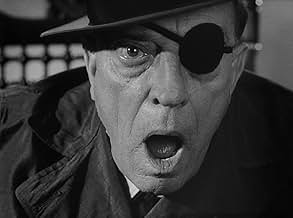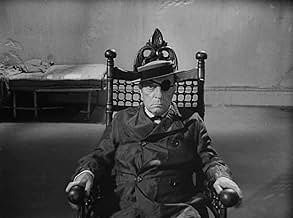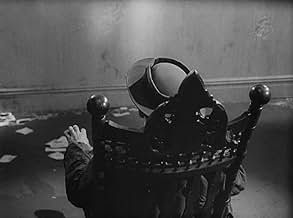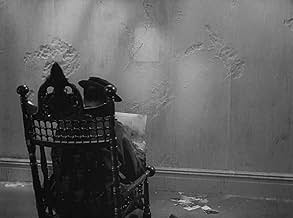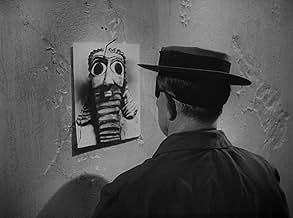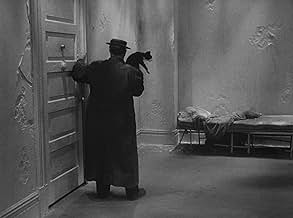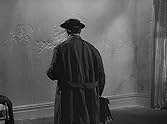A twenty-minute, almost totally silent film (no dialogue or music, save one 'shhh!') in which Buster Keaton attempts to evade observation by an all-seeing eye. But, as the film is based arou... Read allA twenty-minute, almost totally silent film (no dialogue or music, save one 'shhh!') in which Buster Keaton attempts to evade observation by an all-seeing eye. But, as the film is based around Bishop Berkeley's principle 'esse est percipi' (to be is to be perceived), Keaton's ver... Read allA twenty-minute, almost totally silent film (no dialogue or music, save one 'shhh!') in which Buster Keaton attempts to evade observation by an all-seeing eye. But, as the film is based around Bishop Berkeley's principle 'esse est percipi' (to be is to be perceived), Keaton's very existence conspires against his efforts
- Directors
- Writer
- All cast & crew
- Production, box office & more at IMDbPro
Featured reviews
Largely indecipherable without Beckett's explanation, "O" hides from the gaze of every living thing, including himself, in a small cell-like room as both precursor and condition for his character's death.
And, if you are the least bit curious about Film, be sure to watch Ross Lipman's fascinating Kino Essay "Notfilm" (2015).
Beckett's work at that time was slowly gaining ground in Norway, as did Pinter's - trying to promote either was an uphill task in a mountainous country unused to modern drama and more tuned to sports. The discussions in a seminar after the showing proved this... But this resistance to something obviously alien did not detract from my pleasure (and several others') in relishing a masterpiece, where nothing could have been improved on. A book called "Film by Samuel Beckett" was published by Faber in 1971, and generously offers complete scenario and a profusion of illustrations and production shots. It has also comments by Beckett and an essay by Schneider, and is a useful substitute for anybody without access to the Film itself.
Agreeing with other commentators, I can only say that this is really an absorbing and disturbing experience - quite unique! And one that leaves you thinking and wondering and shuddering for a long time.
There's a perfect link of Beckett's intense focus on the self with Keaton's now-wizened features. When the screen is filled with Keaton's eye alone, you can see the wrinkles surrounding it; you can tell Beckett has more in mind than just doing a close-up. As Keaton arranges and rearranges the things in his sparse living quarters, and goes through pictures of himself, often hiding from the camera, you begin to see what's going on: is he, the character, only who he sees in the mirror, and in pictures, or is he other than that?
For this emphasis on the solipsistic, the length of Film is perfect. Any longer and it could have been a bit tedious. But Keaton lends it a few touches of his by now archetypal humor--wholly improvised--which Beckett found delightful, and Alan Schneider, the director, applauded. This is a unique work that any serious student of film should have in her/his library. It was formerly included in a VHS collection of Keaton's work but now, alas, does not seem to be available any longer.
Keaton was mystified by this script, too, as by "Godot", but wanted the money. He suggested several comedic bits be added, because he thought the whole thing would be less than five minutes. In New York, he wanted to use one of his flat hats rather than the bowler Beckett had written in, and Beckett immediately agreed.
The film was shot in mid-summer in a very hot New York, each day over 90 degrees. Keaton (age 69, and not in great health: he died less than two years later) never complained as he had to keep running along that brick wall in the heavy overcoat.
It was Beckett's only visit to the U.S., and he never got outside of New York, and left the U.S. as quickly as possible.
Did you know
- TriviaThe story of making "Film" was the basis of a play "The Stone Face" by Sherry MacDonald. The play was read in Orlando at the 2006 New Playfest, and work shopped at the 2007 New Playfest.
- ConnectionsFeatured in Zomergasten: Episode #3.3 (1990)
Details
- Runtime20 minutes
- Color
- Sound mix
- Aspect ratio
- 1.37 : 1
Contribute to this page


